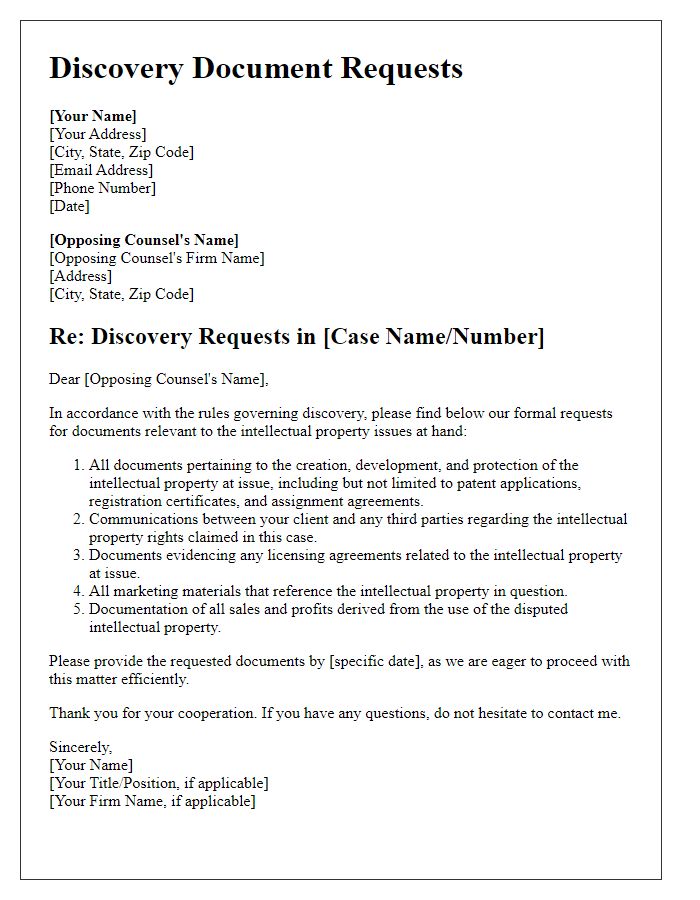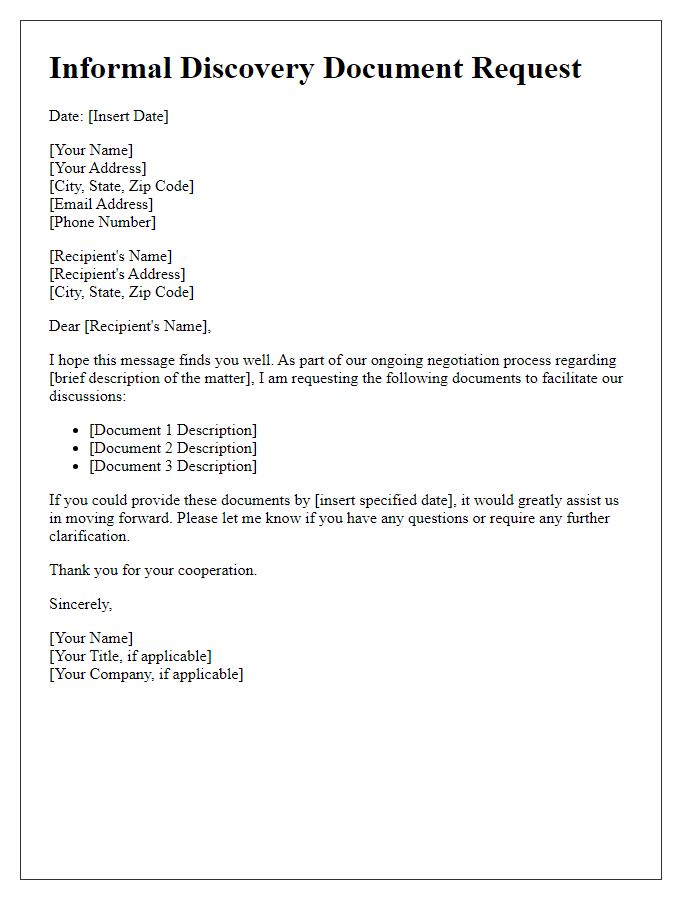Are you navigating the complexities of discovery document requests in a legal context? Crafting the perfect letter can significantly streamline the process and ensure that all necessary documents are accounted for. This essential communication not only outlines your needs but also fosters transparency and cooperation between parties. Join us as we delve deeper into effective letter templates that will empower your legal journey!

Title and Contact Information
The title of discovery document requests typically indicates the legal framework, such as "Plaintiff's First Set of Requests for Production of Documents" in civil litigation. This set of requests often includes contact information of the parties involved, including the names, addresses, and phone numbers of both the plaintiff and defendant. In addition, it may reference the relevant case number, the court in which the case is filed, as well as the date of submission for tracking purposes. Such documentation is crucial for ensuring transparency and accountability in the legal process, facilitating exchanges between legal teams in jurisdictions like California, New York, or Texas. Accurate contact information ensures effective communication and potential resolution of issues surrounding document production within the stipulated timelines.
Introduction and Purpose
The discovery document requests serve as a formal mechanism in legal proceedings to obtain pertinent evidence and information relevant to the case. This process, governed by rules of procedure such as the Federal Rules of Civil Procedure (FRCP) in the United States, enables parties to gather documents, electronically stored information, and tangible evidence that may influence the outcome of the litigation. The purpose of these requests is to ensure transparency, promote fair trial rights, and facilitate informed legal strategies. Parties involved in cases, such as personal injury lawsuits or commercial disputes, must adhere to specific timelines and formats for these requests to maintain procedural integrity.
Specific Document Requests
In legal proceedings, specific document requests (SDRs) act as formal inquiries aimed at obtaining particular records relevant to the case. These requests are essential in the discovery phase, crucial for gathering evidence. Typical examples include financial statements from fiscal years 2021-2023, emails relating to contract negotiations in April 2022, and correspondence regarding regulatory compliance with the U.S. Securities and Exchange Commission. Each request should precisely identify the document type, the timeframe, and context to streamline the production process. Response deadlines, as governed by local civil procedure rules (which vary by jurisdiction), typically range from 30 to 45 days, emphasizing the importance of compliance within the specified period to facilitate effective case preparation.
Deadline for Response
Discovery document requests require a timely response from the receiving party to ensure compliance with legal proceedings. In civil litigation, for instance, parties typically receive a deadline of 30 days to respond to these requests, as outlined in the Federal Rules of Civil Procedure, Rule 34. Failure to comply may result in court sanctions, including penalties or adverse inferences. Effective organization of documents, such as electronic files, emails, and physical records, is essential for meeting this deadline, particularly in complex cases involving multiple parties, such as class actions or large corporate litigations. Adequate preparation, including a thorough review of relevant information and consultation with legal counsel, can aid in fulfilling discovery obligations.
Legal Compliance and Confidentiality
Discovery document requests play a crucial role in the legal process, particularly in litigation contexts, where parties exchange information relevant to a case. These requests can relate to a variety of documents, including emails, contracts, and financial records. Compliance with legal standards, such as the Federal Rules of Civil Procedure, ensures that these documents are produced timely and in accordance with pre-established guidelines. Confidentiality is paramount, especially in sensitive cases involving personal data or trade secrets. Implementing protective orders can safeguard the integrity of confidential information while allowing necessary disclosures. Proper management of these processes fosters transparency, reduces potential disputes, and upholds legal integrity in the pursuit of justice.
Letter Template For Discovery Document Requests Samples
Letter template of formal discovery document requests for litigation purposes

Letter template of discovery document requests for compliance investigation

Letter template of discovery document requests in intellectual property cases

Letter template of comprehensive discovery document requests for regulatory hearings










Comments